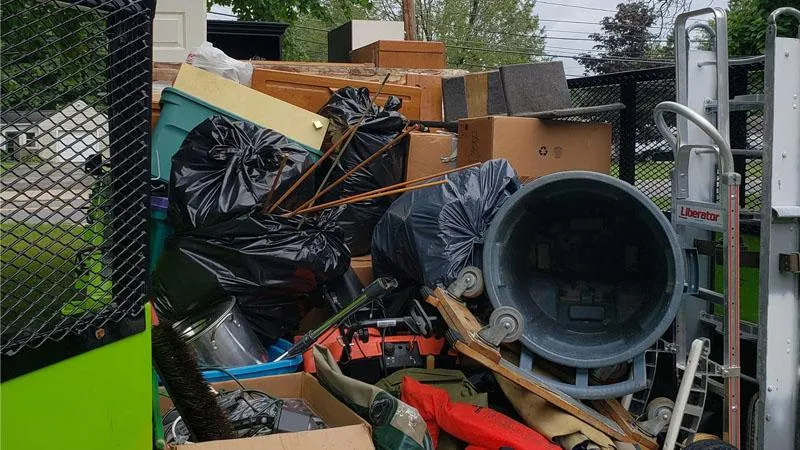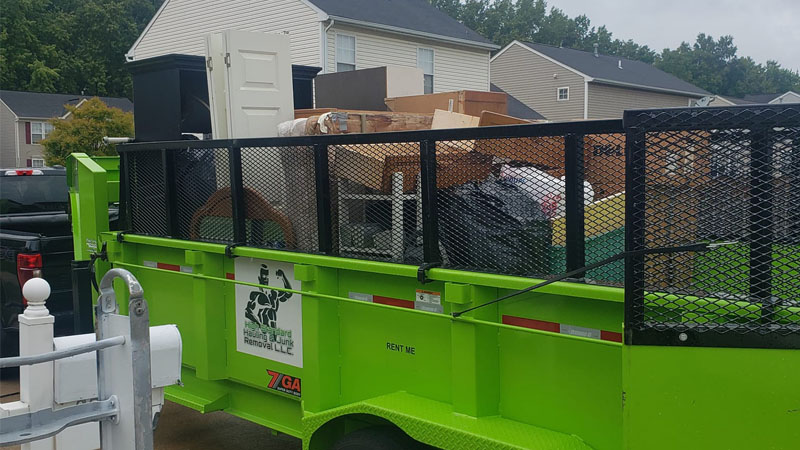
Managing Demolition Waste: What You Need to Know
The Unique Challenges of Managing Demolition Waste
Demolition is a high-stakes phase of construction—tearing down walls, floors, roofs, or entire buildings to make way for renovations or new structures. This process invariably yields massive amounts of debris, from concrete and brick to wood, insulation, and sometimes hazardous materials like asbestos or lead paint. Mismanaging demolition waste can derail timelines, inflate budgets, and expose workers to safety risks.
Effective demolition waste management involves advanced planning, knowledge of disposal regulations, and safe handling of bulky or hazardous materials. Below, we’ll discuss the main types of demolition waste, how to remove them safely, and how High Standard Hauling & Junk Removal can streamline this challenging phase of your project.
Types of Demolition Waste We Handle
Demolition waste is more than just random rubble. Understanding what you’re dealing with is the first step in responsible removal:
Concrete and Asphalt
Often from foundations, driveways, or parking lots. Heavy and bulky, but recyclable when crushed and reused as aggregate.
Wood and Drywall
Floors, studs, wall panels, and ceilings. Wood can sometimes be salvaged, while drywall must be disposed of properly—especially if it contains old paint or finishes.
Metals
Beams, structural supports, wiring, or roofing elements like steel and aluminum. These are typically high-value recyclables.
Insulation Materials
Can include fiberglass, cellulose, or polystyrene foam. Some older insulation might contain asbestos, requiring special handling.
Hazardous Substances
Lead paint, asbestos panels, or moldy materials fall under regulated disposal requirements. Mishandling these items can lead to legal and health consequences.
Each category demands different disposal methods, and mixing them indiscriminately can lead to environmental hazards or rejected loads at recycling centers.
Safe Removal Practices: Tips to Keep Your Team and Site Safe During Demolition
Safety is paramount when dealing with demolition waste. Here are best practices to minimize accidents and ensure compliance:
Pre-Demolition Inspection
Identify any hazardous materials (like asbestos, lead paint, or PCBs) before demolishing. Hire certified inspectors if necessary.
Protective Gear
Workers should wear hard hats, gloves, goggles, and respirators (especially in dusty or mold-prone areas).
For more hazardous materials, specialized suits and advanced respirators may be required.
Controlled Demolition Techniques
Deconstruct methodically, removing salvageable items first. Controlled demolition reduces the chances of unwanted collapses and minimizes dust.
Designated Drop Zones
Establish clear routes for debris removal. Create drop zones where larger pieces can be safely lowered or craned off.
Keep walkways and emergency exits free of debris to avoid trip hazards.
Regular Site Cleanups
Debris piles grow fast during demolition. Scheduling frequent removal or providing on-site dumpsters helps maintain a safer environment.
By prioritizing safety at every step, you protect your workers, avoid injuries, and reduce liability—a win-win for all involved.
Eco-Friendly Disposal: Sorting Materials for Recycling and Proper Disposal

Demolition doesn’t have to be synonymous with massive landfill dumping. Many materials can be repurposed, recycled, or donated:
Concrete Recycling: Crushed concrete can serve as base material for new roads or construction.
Wood Salvage: Beams, planks, or decorative elements might still be reusable, especially if they’re from older or historically significant structures.
Metal Recovery: Steel, copper, and aluminum are all valuable and easily recyclable.
Donating Fixtures: Doors, windows, cabinets, or flooring in decent condition may find a second life through charities or salvage warehouses.
Sorting your demolition waste at the source drastically improves recycling rates. Consider assigning bins or dumpsters for specific material streams. This approach speeds up the hauling process and ensures that each load heads to the appropriate facility for either disposal or recycling.
How High Standard Hauling Supports Your Demolition Projects
High Standard Hauling & Junk Removal specializes in efficient, safe, and eco-friendly demolition waste removal. Here’s how we elevate your project:
Reliable Pickup
We coordinate with your demolition schedule, providing timely dumpster drop-offs and pickups so that debris doesn’t accumulate and stall progress.
Fast Turnaround
With a dedicated team and fleet of vehicles, we respond quickly to on-demand haul-away requests, keeping your site free from hazardous clutter.
Regulatory Compliance
Our staff stays informed about local and federal regulations regarding waste disposal, especially for hazardous materials. This knowledge helps you avoid costly fines.
Responsible Disposal
We partner with recycling centers and local charities, diverting as much material as possible from landfills. If we encounter salvageable items, we coordinate donations or re-use strategies as feasible.
Flexible Container Options
From 10-yard dumpsters for small demolition projects to 40-yard bins for large-scale tear-downs, we can match container sizes to your waste volume.
Outsourcing demolition debris management to High Standard Hauling lets your team focus on safe teardown procedures and project deadlines—without the headache of coordinating complex waste logistics.
Final Thoughts
Demolition projects require meticulous planning to handle large volumes of waste—often comprised of hazardous, bulky, or recyclable materials. By identifying your waste types upfront, implementing safe work practices, and prioritizing eco-friendly disposal, you’ll not only keep your job site safe but also strengthen your reputation as a responsible contractor.
Simplify your demolition waste management and let us help you keep your site safe, efficient, and environmentally friendly. High Standard Hauling & Junk Removal offers fast, reliable service tailored to your demolition timeline.
Call us at 440-554-5599
Email us at [email protected]
Click here to request a free quote!
Don’t let demolition debris overwhelm your site. Partner with us to handle the heavy lifting—and stay on track for a successful teardown and rebuild!
Thank You for Reading!
We hope these articles help you navigate the complexities of construction waste management, from planning your dumpster needs to adopting eco-friendly and safe demolition practices. Whenever you need reliable hauling services, remember that High Standard Hauling & Junk Removal is just a call or email away:
Phone: 440-554-5599
Email: [email protected]
Experience discipline, efficiency, and professionalism on every job site. Let us keep your projects clean, safe, and on schedule!